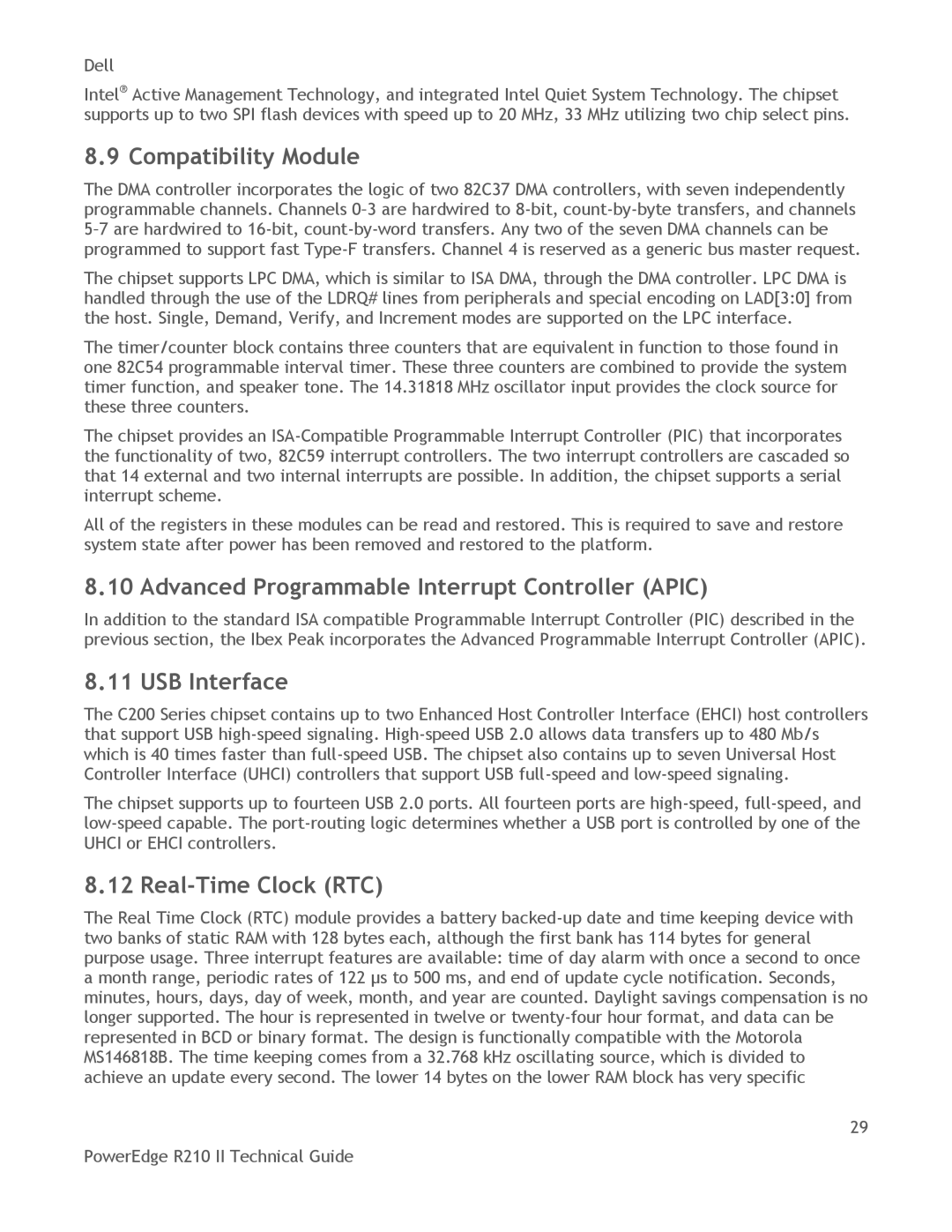Dell
Intel® Active Management Technology, and integrated Intel Quiet System Technology. The chipset supports up to two SPI flash devices with speed up to 20 MHz, 33 MHz utilizing two chip select pins.
8.9 Compatibility Module
The DMA controller incorporates the logic of two 82C37 DMA controllers, with seven independently programmable channels. Channels
The chipset supports LPC DMA, which is similar to ISA DMA, through the DMA controller. LPC DMA is handled through the use of the LDRQ# lines from peripherals and special encoding on LAD[3:0] from the host. Single, Demand, Verify, and Increment modes are supported on the LPC interface.
The timer/counter block contains three counters that are equivalent in function to those found in one 82C54 programmable interval timer. These three counters are combined to provide the system timer function, and speaker tone. The 14.31818 MHz oscillator input provides the clock source for these three counters.
The chipset provides an
All of the registers in these modules can be read and restored. This is required to save and restore system state after power has been removed and restored to the platform.
8.10 Advanced Programmable Interrupt Controller (APIC)
In addition to the standard ISA compatible Programmable Interrupt Controller (PIC) described in the previous section, the Ibex Peak incorporates the Advanced Programmable Interrupt Controller (APIC).
8.11 USB Interface
The C200 Series chipset contains up to two Enhanced Host Controller Interface (EHCI) host controllers that support USB
The chipset supports up to fourteen USB 2.0 ports. All fourteen ports are
8.12 Real-Time Clock (RTC)
The Real Time Clock (RTC) module provides a battery
29
PowerEdge R210 II Technical Guide
